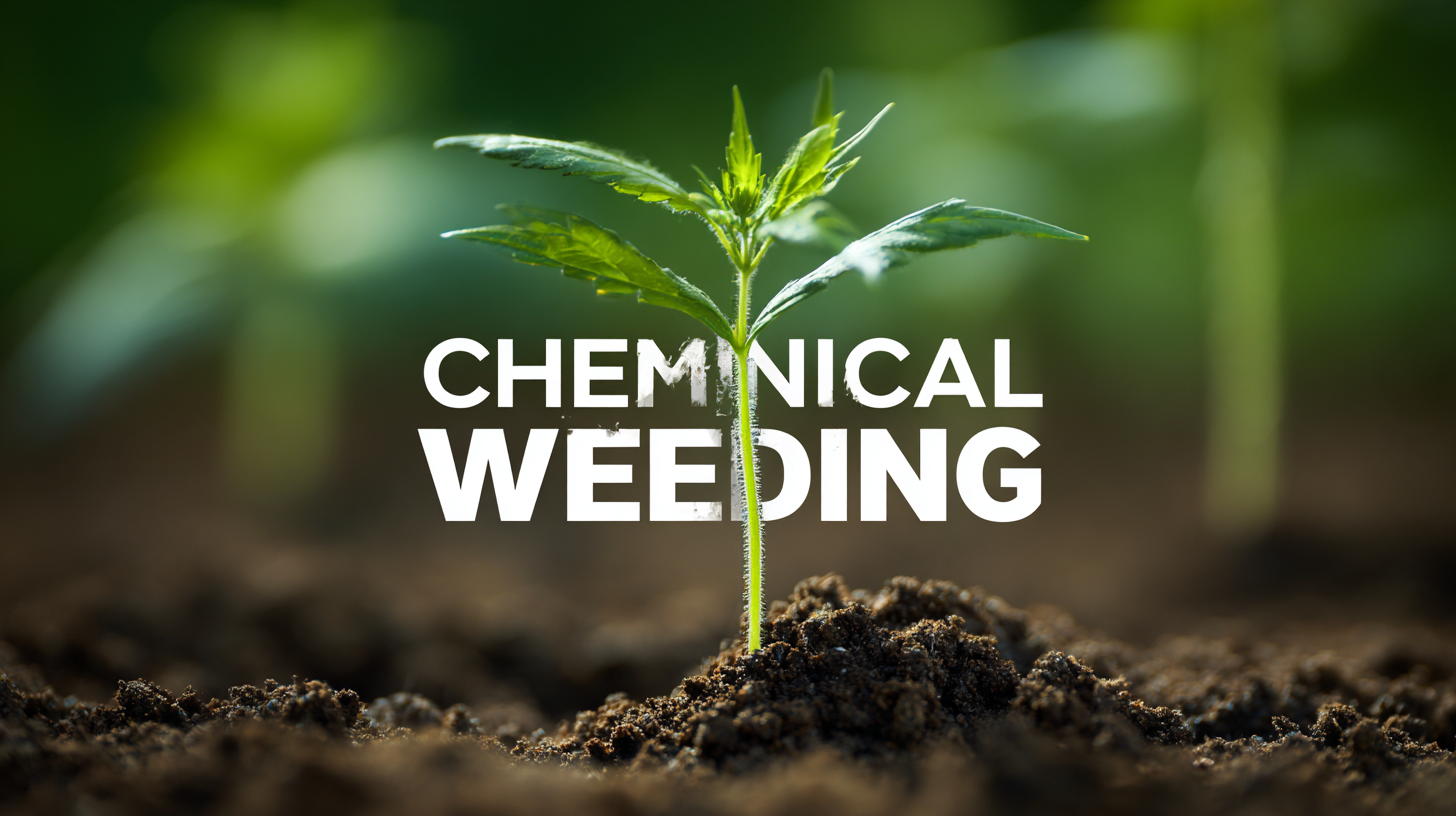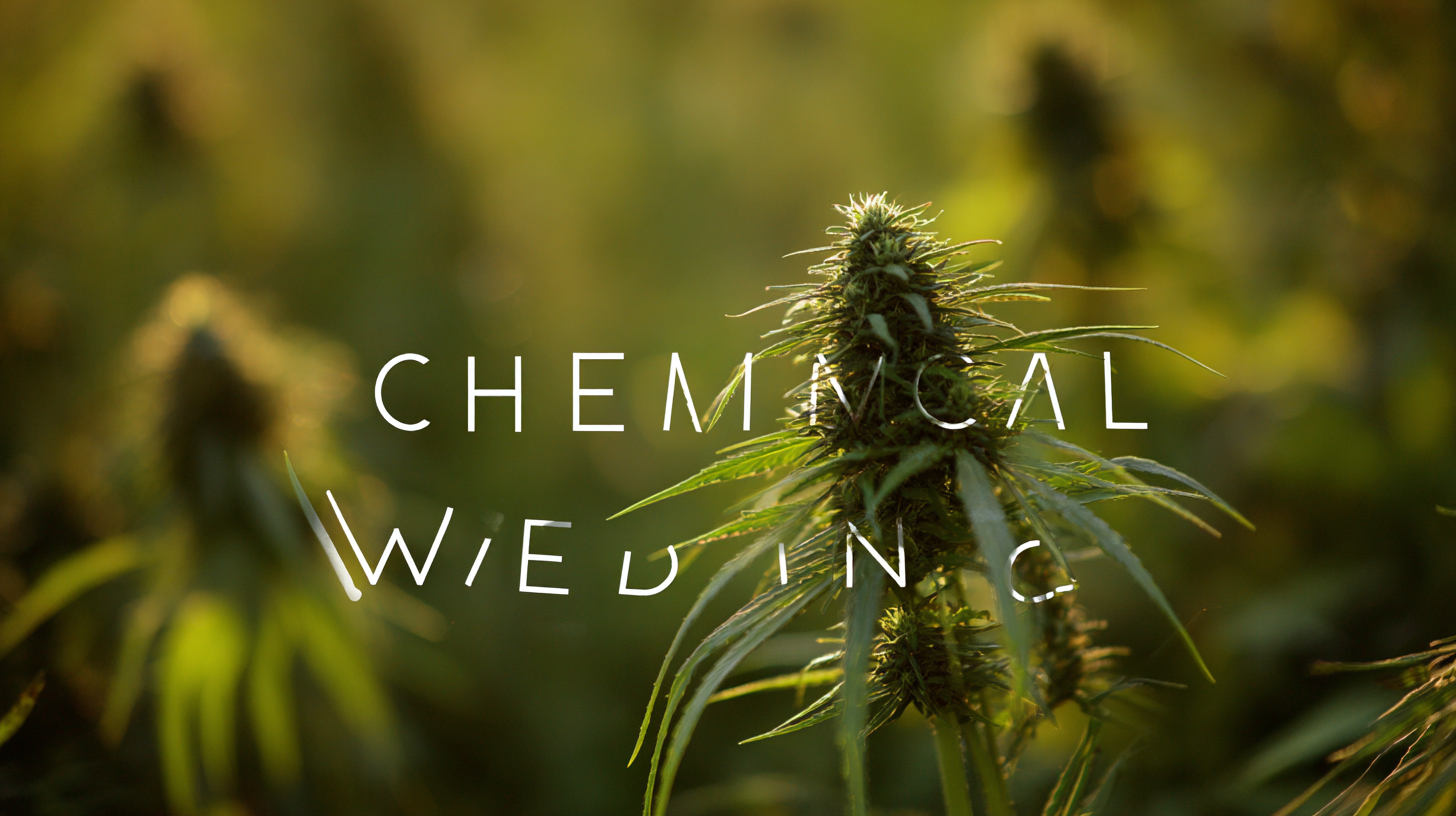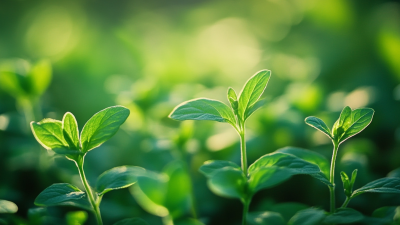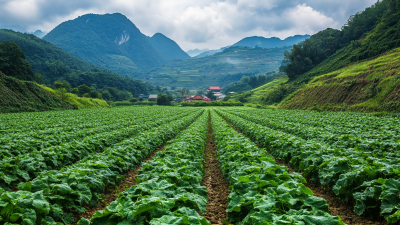 0551-68500918
0551-68500918 





Hey there! Let’s talk about something that’s really changing the game in agriculture: Chemical Weeding. It’s one of those vital pieces that helps boost crop yields while keeping our farming practices sustainable. You might find it interesting that reports predict the global demand for herbicides will hit a whopping $30 billion by 2025! That’s mostly because farmers are looking for effective ways to manage weeds across different types of farming systems. Now, when it comes to reliable solutions, Innovation Meiland (Hefei) Co., LTD. really shines. Based in Hefei, China, they’re super committed to developing innovative pesticide products and formulations. They focus on providing high-quality chemicals that not only meet but often exceed the tough standards set by buyers around the world. In this blog, we’re diving into seven key strategies for effective chemical weeding that highlight how Meiland is playing a crucial role in delivering trustworthy and consistent products that align with where the industry is heading.

You know, chemical weeding is super important in today’s farming world. I mean, weeds are like the nemesis for farmers everywhere! They can really mess with crop growth, lower yields, and, let’s be honest, cause some serious economic headaches. But with the right chemical weeding methods in place, farmers can really boost their productivity and keep their farming practices sustainable, which is a win-win!
Lately, some studies have shown just how effective climate-smart strategies can be for managing weeds. For example, things like zero-tillage and drip irrigation can really cut down on the number of weeds and even their variety! Not only do these practices help combat invasive species, but they also create a healthier environment for crops overall. Plus, with all the cool tech advancements in precision agriculture—like drone imagery and computer vision—farmers can apply herbicides way more efficiently. They can target just the spots that need it and lessen the impact on the environment. It’s exciting to see these innovations paving the way for the future of chemical weeding, making sure it keeps adapting to support sustainable agriculture.

When it comes to finding effective ways to manage weeds in agriculture, digging into various chemical weeding products can reveal some valuable insights for those in the market. So, you might find it interesting that the global herbicide market was worth around $24 billion in 2020, and it's expected to grow about 6% each year up until 2027. This growth makes sense, especially since more farmers are turning to advanced chemical formulations aimed at boosting crop yields without harming the environment too much.
Now, if you're on the lookout for chemical weeding solutions, there are a few things you'll want to think about: how effective they are, how they're applied, and what kind of impact they have on the environment. For example, glyphosate is super popular because it works well against a lot of different weeds. But there are also other options like dicamba and 2,4-D that provide different ways to handle weeds, which could be really useful for an integrated weed management approach.
In fact, there was this study in the Journal of Agricultural Science that found using a mix of herbicides helped cut down herbicide resistance cases by about 30%! That really highlights how important it is to have a variety of products in your toolkit when tackling weed problems sustainably. So as buyers weigh their options, it's going to be crucial to focus on innovative solutions that don’t just deliver performance but also keep environmental health in mind. That's the key to long-term success in farming!
| Product Type | Active Ingredients | Target Weeds | Application Rate (L/ha) | Effectiveness (Days) | Cost (USD/L) |
|---|---|---|---|---|---|
| Pre-emergent Herbicide | Pendimethalin | Annual Grasses | 3.0 | 30 | 15 |
| Post-emergent Herbicide | Glyphosate | Broadleaf Weeds | 1.5 | 14 | 10 |
| Selective Herbicide | 2,4-D | Dandelions | 2.0 | 21 | 12 |
| Systemic Herbicide | Triclopyr | Woody Plants | 1.0 | 30 | 20 |
| Non-selective Herbicide | Paraquat | All Weeds | 0.8 | 7 | 25 |
You know, when it comes to agricultural innovation, one of the big breakthroughs out there is the smart use of chemical weeding solutions. This has really caught the attention of buyers around the world who want to boost their crop productivity. Just take this interesting case from a farm in Brazil. They decided to get a bit high-tech and started using drones that are fitted with fancy sensors to spray herbicides. Instead of blasting chemicals everywhere, they targeted specific weeds. The results were pretty impressive—about a 30% drop in their chemical costs and a nice 10% bump in their overall crop yield. It just goes to show how technology can really help us get better at using what we have while also being more sustainable.
Then there’s this rice farming project in Vietnam that’s also worth mentioning. The farmers there started mixing chemical weeding into their usual methods. They ran some trials comparing the old-school techniques with more selective herbicides, and guess what? They managed to cut down on labor costs and reduce the time they spent on weeding significantly. That pilot program didn’t just help their crops thrive but also gave them some great insights that they can use for future planting. So, it's clear that tweaking chemical weeding practices can really spark some impressive advancements in agriculture, especially when you're dealing with the unique environmental challenges that different regions face.
This bar chart illustrates the effectiveness of seven different chemical weeding strategies based on global case studies. Each strategy has been evaluated according to its implementation success rate, environmental impact, and cost efficiency.
When it comes to dealing with weeds, picking the right chemical solution is super important. You want to manage those pesky plants without doing any harm to your crops or the environment. So first things first, take a close look at what kinds of weeds you're up against in your fields. Are they broadleaf weeds, grasses, or maybe some stubborn perennials? Knowing exactly what you're dealing with can really help you choose a herbicide that tackles those specific troublemakers. And don’t forget, getting a grip on their life cycles and any resistance patterns they might have is key. This info is gonna be super helpful for strategizing your application approach and making your chosen solution as effective as possible.
Then there’s also the compatibility factor. Not all herbicides play nice with every crop, so you really need to be careful here. It’s crucial to read those product labels and, if you can, get some expert advice—better safe than sorry, right? And these days, let’s not overlook the environmental impact and regulations. It’s becoming a big deal for buyers everywhere. Opting for solutions that have been tested for safety and effectiveness not only keeps you compliant with local rules but also supports sustainable farming practices. So by making informed choices in these areas, you can nail that weed control while keeping your farm's ecosystem in balance.

So, if you want to get the most out of your chemical weeding, it’s not just about picking the right products; you’ve also got to nail those application techniques. A solid tip is to apply herbicides when the weather's on your side. Seriously, steer clear of those windy days to avoid drift, and try to hit it during early morning or late afternoon when it’s cooler. This way, you help keep the chemicals effective instead of letting them evaporate too quickly. And don’t forget about soil moisture; if it’s too dry when you apply, the weeds won’t soak up the herbicide as they should, and your efforts might go to waste.
Also, understanding the life cycle of the weeds you're targeting is really important. Timing it right—like applying those herbicides when the weeds are just starting to grow—can really boost your control. You’ll see way better results if you tackle annual weeds early rather than waiting for them to get too established. Plus, mixing in some cultural practices, like crop rotation or mulching, can really work wonders together, giving you longer-lasting outcomes. Keep tweaking your strategy based on how things are going and any resistance patterns you notice; that way, your chemical weeding efforts will stay strong and effective.
: Chemical weeding is crucial as it helps manage weeds, which can hinder crop growth and reduce yields, leading to economic losses for farmers.
Climate-smart strategies include zero-tillage and drip irrigation, which can reduce weed density and diversity while promoting healthier crop ecosystems.
Precision agriculture, through technologies like drone imagery and computer vision, allows for targeted application of herbicides, focusing on specific areas that need treatment and minimizing environmental impact.
The farm experienced a 30% reduction in chemical costs and a 10% increase in overall crop yield by using drones equipped with sensors to target specific weed populations.
Farmers significantly decreased labor costs and time spent weeding by integrating selective herbicides into their traditional practices, improving overall crop health and informing future planting strategies.
Buyers should assess the types of weeds present, the compatibility of the chemical with crops, and the environmental impact and regulatory compliance of the products being considered.
Identifying specific weed types helps in choosing a herbicide that effectively targets those plants, enhancing the efficacy of the weed management strategy.
Understanding these patterns allows for a more strategic application approach, improving the effectiveness of the chosen herbicide.
Ensuring products have been tested for safety and effectiveness helps maintain compliance with local regulations and promotes sustainable agricultural practices.
The goal is to enhance agricultural productivity while ensuring the sustainability of farming practices and promoting ecological balance.







